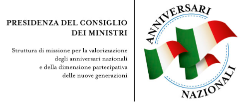Lingua/linguaggio, senso comune e gruppi sociali subalterni
On a number of occasions during his detention, Gramsci spoke of his wish to go into linguistic questions in depth. The best known sources for this are the letter to Tania of 19 March 1927, point 12 of the Main Arguments outlined on 8 February 1929, The language question in Italy: Manzoni and Ascoli and Notebook 29, the last of the monographic notebooks, entitled Notes for an Introduction to the study of grammar, which he started at the clinic in Formia and whose reflections begin from his reading of Alfredo Panzini's Guide to Italian Grammar. Gramsci had already devoted attention to the polemic between Ascoli and Manzoni, and in a letter to his sister-in-law of 17 November 1930 he wrote that, ten years earlier, he had collected material for an essay on the language question according to Manzoni, which was also the object of his analysis in the article A single language and Esperanto ("Il Grido del Popolo", 16 February 1918). His reflection in prison took up again his youthful intuitions, inserting them into the framework of Marxism as a philosophy of praxis. The language question thus became the tangential point for a series of Gramscian concepts: the relationship between structure and superstructures, hegemony, the conception of the world, common sense, the subaltern social groups, the unity of theory and practice, and translatability. The present contribution seeks to bring out the most significant moments of this reflection.
Available online: International Gramsci Journal (Accessed December 12, 2016)
| Language | ita |
| Names |
[author] Gaboardi, Natalìa |
| Subjects |
Senso Comune
Concezione Del Mondo Lingua (e Linguistica) Subalterno Traducibilità
Common sense
World Conception Language (including Linguistics) Subaltern Translatability |

